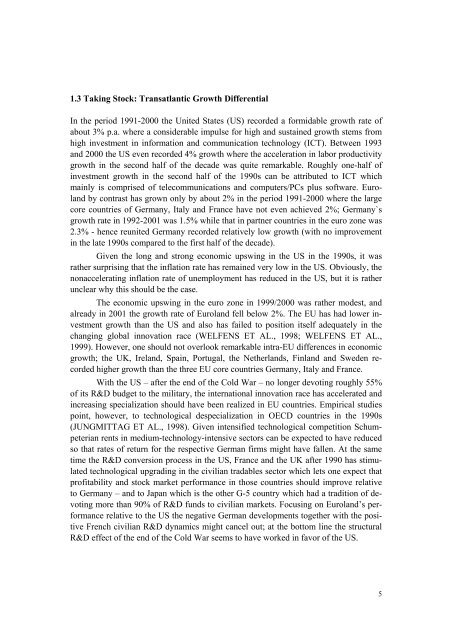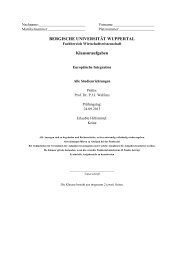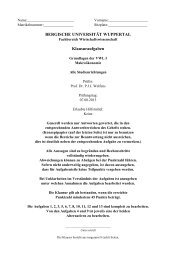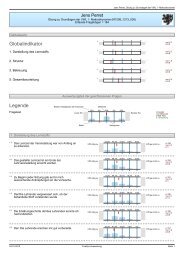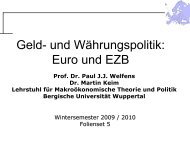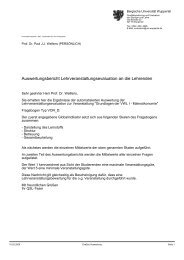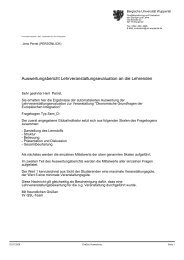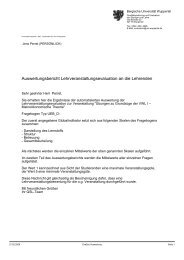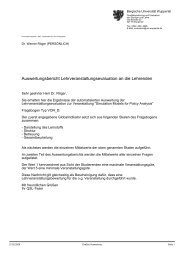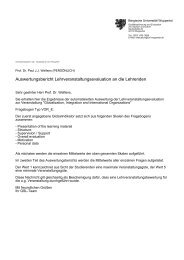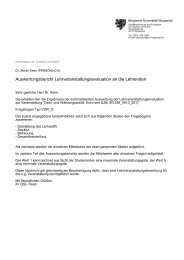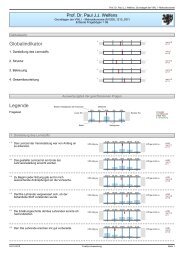UNIVERSITÄT POTSDAM - Prof. Dr. Paul JJ Welfens
UNIVERSITÄT POTSDAM - Prof. Dr. Paul JJ Welfens
UNIVERSITÄT POTSDAM - Prof. Dr. Paul JJ Welfens
You also want an ePaper? Increase the reach of your titles
YUMPU automatically turns print PDFs into web optimized ePapers that Google loves.
1.3 Taking Stock: Transatlantic Growth Differential<br />
In the period 1991-2000 the United States (US) recorded a formidable growth rate of<br />
about 3% p.a. where a considerable impulse for high and sustained growth stems from<br />
high investment in information and communication technology (ICT). Between 1993<br />
and 2000 the US even recorded 4% growth where the acceleration in labor productivity<br />
growth in the second half of the decade was quite remarkable. Roughly one-half of<br />
investment growth in the second half of the 1990s can be attributed to ICT which<br />
mainly is comprised of telecommunications and computers/PCs plus software. Euroland<br />
by contrast has grown only by about 2% in the period 1991-2000 where the large<br />
core countries of Germany, Italy and France have not even achieved 2%; Germany`s<br />
growth rate in 1992-2001 was 1.5% while that in partner countries in the euro zone was<br />
2.3% - hence reunited Germany recorded relatively low growth (with no improvement<br />
in the late 1990s compared to the first half of the decade).<br />
Given the long and strong economic upswing in the US in the 1990s, it was<br />
rather surprising that the inflation rate has remained very low in the US. Obviously, the<br />
nonaccelerating inflation rate of unemployment has reduced in the US, but it is rather<br />
unclear why this should be the case.<br />
The economic upswing in the euro zone in 1999/2000 was rather modest, and<br />
already in 2001 the growth rate of Euroland fell below 2%. The EU has had lower investment<br />
growth than the US and also has failed to position itself adequately in the<br />
changing global innovation race (WELFENS ET AL., 1998; WELFENS ET AL.,<br />
1999). However, one should not overlook remarkable intra-EU differences in economic<br />
growth; the UK, Ireland, Spain, Portugal, the Netherlands, Finland and Sweden recorded<br />
higher growth than the three EU core countries Germany, Italy and France.<br />
With the US – after the end of the Cold War – no longer devoting roughly 55%<br />
of its R&D budget to the military, the international innovation race has accelerated and<br />
increasing specialization should have been realized in EU countries. Empirical studies<br />
point, however, to technological despecialization in OECD countries in the 1990s<br />
(JUNGMITTAG ET AL., 1998). Given intensified technological competition Schumpeterian<br />
rents in medium-technology-intensive sectors can be expected to have reduced<br />
so that rates of return for the respective German firms might have fallen. At the same<br />
time the R&D conversion process in the US, France and the UK after 1990 has stimulated<br />
technological upgrading in the civilian tradables sector which lets one expect that<br />
profitability and stock market performance in those countries should improve relative<br />
to Germany – and to Japan which is the other G-5 country which had a tradition of devoting<br />
more than 90% of R&D funds to civilian markets. Focusing on Euroland’s performance<br />
relative to the US the negative German developments together with the positive<br />
French civilian R&D dynamics might cancel out; at the bottom line the structural<br />
R&D effect of the end of the Cold War seems to have worked in favor of the US.<br />
5


